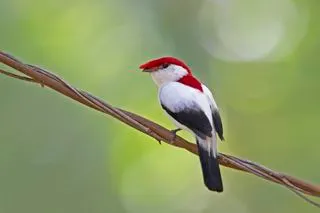The world’s biodiversity faces an unprecedented crisis. Species are vanishing at an alarming rate, a stark reminder of the delicate balance of our ecosystems. However, amidst this grim reality, a beacon of hope shines through. Dedicated conservationists, scientists, and communities worldwide are waging a relentless battle to save endangered species from the brink of extinction. This is not just a story of survival; it’s a testament to human ingenuity, unwavering dedication, and the inherent resilience of nature.
The Silent Crisis: Understanding the Scale of Extinction
- The Sixth Mass Extinction: We are living in what scientists refer to as the sixth mass extinction, a period of accelerated species loss primarily driven by human activities.
- Habitat Loss and Fragmentation: Deforestation, urbanization, and agricultural expansion are destroying and fragmenting natural habitats, leaving animals without food, shelter, and breeding grounds.
- Climate Change: Rising temperatures, extreme weather events, and altered ecosystems are pushing many species beyond their tolerance limits.
- Poaching and Illegal Wildlife Trade: The lucrative black market for wildlife products fuels the relentless slaughter of iconic species like elephants, rhinos, and tigers.
- Pollution and Invasive Species: Chemical pollutants contaminate ecosystems, while invasive species disrupt native food webs and introduce diseases.
Key Words: extinction, biodiversity, habitat loss, climate change, poaching, wildlife trade, conservation, endangered species.

The Frontlines of Conservation: Strategies and Success Stories
Conservation efforts are multifaceted, employing a range of strategies tailored to the specific needs of each species.
- Habitat Restoration and Protection:
- Establishing protected areas: National parks, wildlife reserves, and marine sanctuaries provide safe havens for endangered species.
- Reforestation and habitat restoration: Replanting forests and restoring degraded ecosystems create vital habitats.
- Corridor creation: Connecting fragmented habitats allows animals to move freely and access resources.
- Case example: The rewilding of areas in Europe, that are allowing large mammals to return to areas they were extirpated from.
- Breeding Programs and Reintroduction:
- Captive breeding: Zoos and specialized breeding centers breed endangered animals to increase their numbers.
- Reintroduction: Captive-bred or translocated animals are released into their natural habitats.
- Case Example: The California Condor recovery program, which brought the species back from the brink of extinction through captive breeding and release.
- Combating Poaching and Illegal Trade:
- Anti-poaching patrols: Armed rangers patrol protected areas to deter poachers.
- Technology: Drones, camera traps, and satellite tracking are used to monitor wildlife and detect illegal activities.
- Law enforcement: Stricter laws and international cooperation are crucial to combatting the illegal wildlife trade.
- Case example: The use of DNA forensics to track and prosecute wildlife traffickers.
- Community Involvement and Education:
- Empowering local communities: Engaging local communities in conservation efforts ensures long-term sustainability.
- Education and awareness: Raising public awareness about the importance of biodiversity and the threats facing endangered species.
- Case Example: Community based tourism focused on wildlife, that results in the local population having a financial stake in the animals survival.
- Scientific Research and Monitoring:
- Population monitoring: Tracking the numbers and distribution of endangered species to assess their status.
- Genetic research: Studying the genetic diversity of populations to ensure their long-term viability.
- Disease research: Understanding and mitigating the impact of diseases on endangered species.
- Case Example: The study of the genetic diversity of the remaining populations of the Tasmanian devil, to help combat the devil facial tumour disease.
Key Words: habitat restoration, captive breeding, reintroduction, anti-poaching, community involvement, education, scientific research, population monitoring, genetic research.

Spotlight on Success: Remarkable Comeback Stories
- The Arabian Oryx: Once extinct in the wild, the Arabian Oryx has made a remarkable comeback thanks to captive breeding and reintroduction programs.
- The Mauritius Kestrel: This small falcon was once one of the world’s rarest birds, but intensive conservation efforts have helped its population recover.
- The Mountain Gorilla: Through dedicated anti-poaching patrols and community engagement, the mountain gorilla population has shown signs of recovery.
- The Whooping Crane: This majestic bird was on the verge of extinction, but a combination of captive breeding and migration route management has helped its numbers increase.
- The Black Footed Ferret: Through captive breeding and reintroduction, this north American mammal has seen a population increase after being thought extinct.
Challenges and the Road Ahead
Despite the successes, significant challenges remain.
- Funding: Conservation efforts require substantial financial resources, and funding is often limited.
- Political Will: Strong political commitment is essential to enacting and enforcing conservation laws.
- Human-Wildlife Conflict: As human populations expand, conflicts with wildlife are increasing, requiring innovative solutions.
- Climate Change: The accelerating pace of climate change poses a significant threat to many endangered species.
- Global Cooperation: Endangered species do not recognize national borders, requiring international collaboration.

The Importance of Every Species
Every species plays a vital role in maintaining the health and balance of our ecosystems. The loss of even one species can have cascading effects, impacting food webs, pollination, and other essential ecosystem services.
A Call to Action: How You Can Help
- Support Conservation Organizations: Donate to or volunteer with organizations working to protect endangered species.
- Make Sustainable Choices: Reduce your carbon footprint, avoid products made from endangered species, and choose sustainably sourced products.
- Educate Yourself and Others: Learn about the threats facing endangered species and share your knowledge with others.
- Advocate for Conservation: Contact your elected officials and urge them to support strong conservation policies.
- Visit Responsible Wildlife Tourism locations: By visiting tourism locations that are focused on conservation, and the wellbeing of the animals, you are supporting the local economy, and the survival of those animals.
The future of our planet’s biodiversity hangs in the balance. By working together, we can ensure that future generations inherit a world rich in life and wonder.
Do Follow USA Glory For More Updates.






